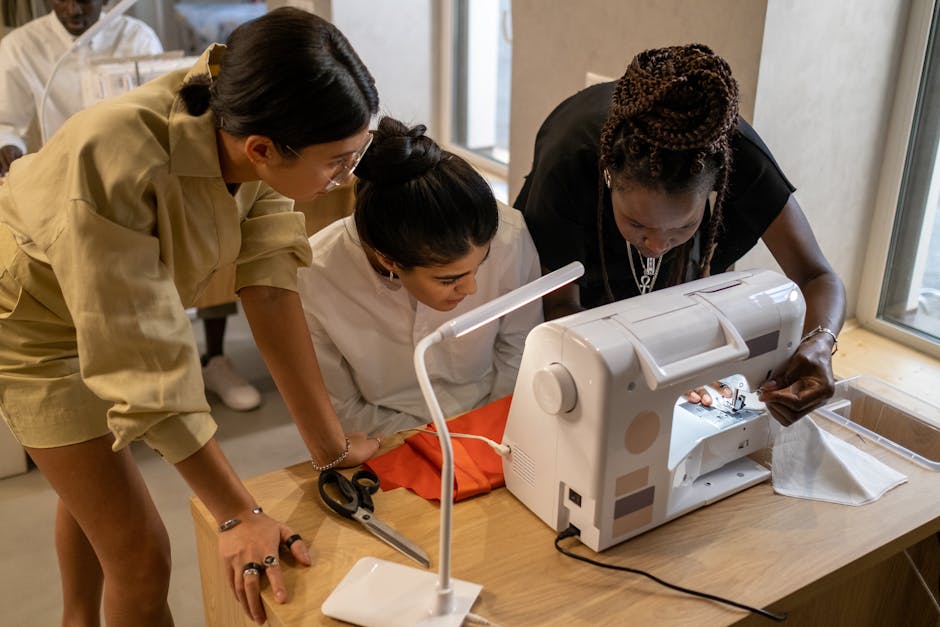Breaking Down The Process Of MVP Development For Entrepreneurs.
Imagine you are an architect designing a house. Before the construction can begin, you need to create a blueprint that outlines every detail of the final product. Similarly, as an entrepreneur, you need to break down the process of Minimum Viable Product (MVP) development to ensure your start-up’s success.
Just like a blueprint guides the creation of a house, MVP development involves several crucial steps that pave the way for your product’s growth. This article will guide you through this process, offering valuable insights and practical advice.
Firstly, you must validate your idea by identifying a problem and proposing an innovative solution.
Next, conduct thorough market research to understand your target audience’s needs and preferences.
Once armed with this knowledge, design a minimalistic prototype that captures the essence of your vision.
From there, it’s time for development and testing – building and iterating on your product until it meets customer expectations. Gathering user feedback is essential here; incorporating their input ensures continuous improvement.
Lastly, launch your MVP into the market and scale it based on user response.
By following these steps diligently, you’ll be well on your way to entrepreneurial success with your MVP.
Key Takeaways
- Idaea validation is crucial and involves identifying a problem and proposing a solution through observation, research, and listening to customers.
- Market research helps understand the target audience’s needs and preferences, and it involves customer segmentation and competitive analysis.
- Designing the MVP involves creating a minimalistic prototype and simplifying the product to visually represent core features.
- Continuous improvement is key in MVP development, and it involves gathering user feedback, analysing data, and iterating on the design, features, and functionality of the MVP.
Idaea Validation: Identifying a Problem and Solution

Let’s dive into the exciting process of identifying a problem and finding the perfect solution for it! As an entrepreneur, one of the first steps in developing your Minimum Viable Product (MVP) is to thoroughly understand the problem you’re trying to solve.
This involves problem identification and solution validation. Problem identification is all about recognising a pain point or an unmet need in the market. It requires careful observation, research, and listening to potential customers. By understanding their frustrations and challenges, you can pinpoint the specific problem that your MVP will address.
Once you’ve identified the problem, it’s time to validate your solution. This means ensuring that your proposed product or service actually solves the identified problem effectively. You can do this by conducting surveys, interviews, or even beta testing with a small group of users. The goal here is to gather feedback and iterate on your solution until you have a clear understanding of how well it meets customer needs.
Transitioning into the next section about market research: understanding your target audience, it’s important to note that problem identification and solution validation are just the initial steps in MVP development. By diving deeper into market research, you can gain valuable insights into who your target audience is and how best to reach them with your product or service.
Understanding your audience will help you shape your MVP further based on their preferences, behaviours, and desires. So let’s move forward and explore how market research plays a crucial role in creating a successful MVP for entrepreneurs like yourself!
Market Research: Understanding your Target Audience

Ironically, comprehending your target audience becomes essential in the chaotic journey of building a start-up. Market research allows you to gain a deep understanding of your target audience’s needs, preferences, and behaviour. By conducting thorough customer segmentation, you can identify different customer groups within your target audience. This enables you to tailor your product or service to meet their specific needs and expectations.
One effective way to understand your target audience is through competitive analysis. It involves researching and analysing your competitors to identify their strengths, weaknesses, and strategies. This helps you differentiate your product by offering unique features or positioning it differently in the market.
To aid in understanding customer segmentation and competitive analysis better, let’s consider the following table:
| Customer Segmentation | Competitive Analysis |
|---|---|
| Identify customer groups based on demographics, behaviours, and preferences | Analyse competitors’ products/services |
| Tailor marketing messages and strategies for each segment | Identify their strengths and weaknesses |
| Customise product features or offerings for different segments | Determine how to differentiate your product |
By utilising these techniques during market research, you can aline your product with the specific needs of each customer segment while also ensuring that it stands out from the competition.
Understanding your target audience through market research lays a solid foundation for designing an MVP that resonates with them. In the subsequent section about ‘designing the MVP: creating a minimalistic prototype,’ we will delve into how this knowledge informs every step of MVP development.
Designing the MVP: Creating a Minimalistic Prototype

To create a minimalistic prototype, you need to focus on simplifying your product or service and visually representing its core features. This means stripping away any unnecessary elements and presenting only the most essential aspects of your offering.
Here are three key steps to guide you in designing your MVP:
-
Conduct user testing: Before diving into the design process, it’s crucial to understand how your target audience will interact with your product. By conducting user testing, you can gather valuable insights on what works well and what needs improvement. This feedback will help inform the design decisions you make for your minimalistic prototype.
-
Wireframing: Once you have a clear understanding of user needs and preferences, it’s time to create wireframes. These visual representations provide a blueprint for the layout and functionality of your MVP. Focus on creating simple, intuitive interfaces that allow users to easily navigate through your product or service.
-
Iterate and refine: Building a minimalistic prototype is an iterative process. As you gather feedback from user testing, make necessary adjustments to improve the overall experience. Continuously refine your design based on real-world usage scenarios.
By following these steps, you can create a minimalistic prototype that effectively showcases your core features while providing an intuitive user experience.
In the subsequent section about development and testing: building and iterating your product, you will learn how to bring this prototype to life through development and further iterations.
Development and Testing: Building and Iterating your Product

The development and testing phase involves building and refining your product through iterative processes. During this stage, you will be actively engaged in creating the actual MVP based on the design you have previously created. This is where you will start seeing your idea come to life as you build, measure, and refine your product.
To effectively track progress and success throughout the development process, it is important to establish key metrics that aline with your goals. By measuring these metrics regularly, you can gain valuable insights into how well your MVP is performing and make data-driven decisions for improvements.
Continuous improvement is a crucial aspect of MVP development. As you gather feedback from users and iterate on your product, you are constantly refining and enhancing its features. This iterative approach allows you to address any issues or limitations early on while keeping up with changing market demands.
Incorporating a cycle of building, measuring, and refining helps ensure that your product evolves in line with user needs and expectations. It also minimises the risk of investing time and resources into developing a product that may not meet market demand.
Next, we will explore the importance of gathering user feedback and incorporating customer input into the MVP development process without losing momentum or focus.
Gathering User Feedback: Incorporating Customer Input

Although it may be challenging to gather user feedback and incorporate customer input into the MVP development process, it’s crucial for ensuring the product meets their needs and expectations. User engagement plays a vital role in identifying areas of improvement and validating your product’s value proposition.
Here are five key steps to effectively gather user feedback and incorporate it into your MVP development:
-
Implement user analytics: By tracking user behaviour and interactions within your product, you can gain valuable insights on how users are using your MVP. This data can help identify pain points or areas where users may be struggling.
-
Conduct surveys and interviews: Engage with your target audience through surveys or one-on-one interviews to gather detailed feedback about their experience using your MVP. This direct interaction allows you to dig deeper into their thoughts, preferences, and suggestions.
-
Monitor social media channels: Keep an eye on social media platforms where users might discuss or review your product. Monitoring these conversations can provide real-time feedback and uncover any issues that need immediate attention.
-
Analyse feedback data: Once you have gathered feedback from various sources, analyse the data to identify recurring patterns or common themes. This analysis will help prioritise which aspects of your MVP require improvements or adjustments.
-
Iterate based on customer input: Use the insights gained from user feedback analysis to iterate on your MVP’s design, features, or overall functionality. Continuously incorporating customer input throughout the development process ensures that you’re building a product that alines with their needs.
By actively engaging with users, analysing their feedback, and iterating based on their input, you can create an MVP that addresses their pain points effectively. With this solid foundation in place, you’ll be ready for the next step of taking your MVP to market – product launch and scaling – where you bring it to a larger audience while maintaining its core value proposition.
Product Launch and Scaling: Taking your MVP to Market

Now that you’ve gathered valuable feedback from your users and made necessary improvements to your Minimum Viable Product (MVP), it’s time to take the next big step: launching and scaling your product in the market. This is a critical phase for entrepreneurs as it involves not only introducing your MVP to potential customers but also ensuring its successful adoption.
One of the key aspects of this phase is determining the optimal pricing strategy for your MVP. You need to carefully evaluate factors such as production costs, competition, customer willingness-to-pay, and perceived value. By finding the right balance between profitability and affordability, you can maximise revenue while attracting customers.
In addition to pricing, effective marketing and promotion are crucial for gaining visibility and attracting your target market. You need to create a comprehensive plan that includes various marketing channels such as social media advertising, content marketing, influencer partnerships, email campaigns, and more. Understanding your target audience’s preferences will help you tailor your messaging appropriately.
Furthermore, building brand awareness through public relations efforts like press releases or media coverage can further enhance credibility and generate interest in your MVP.
Remember that scalability is vital during this phase. Be prepared to handle increased demand by optimising your infrastructure or seeking additional resources if necessary.
As an entrepreneur embarking on this journey, it’s essential to approach the product launch and scaling process with careful planning and execution. By considering pricing strategies, developing effective marketing plans, and focussing on scalability, you can position yourself for success in bringing your MVP to market.
Frequently Asked Questions
What are the steps involved in obtaining funding for MVP development?
To obtain funding for MVP development, you should start by creating a compelling business plan and pitch deck. Then, reach out to potential investors or consider crowdfunding platforms. Be prepared to demonstrate the viability and potential of your MVP.
How can entrepreneurs effectively manage their time and resources during the MVP development process?
To effectively manage your time and resources during MVP development, prioritise tasks based on their importance and urgency. Create a schedule, set clear goals, delegate when necessary, and regularly assess progress to ensure efficient time management and resource allocation.
What strategies can entrepreneurs use to attract and retain users during the initial stages of product launch?
To attract and retain users during the initial stages of product launch, you must unleash a user acquisition frenzy! Harness marketing tactics like social media campaigns and targeted ads. Then, focus on user retention by offering personalised experiences and exceptional customer support.
What are the common challenges faced by entrepreneurs during the development and testing phase of an MVP?
Challenges faced by entrepreneurs during MVP development and testing include limited resources, time constraints, and technical issues. Solutions involve prioritising features, conducting thorough testing, seeking feedback, and iterating quickly to address any problems that arise.
How can entrepreneurs effectively measure the success and impact of their MVP in the market?
To effectively measure your MVP’s success and impact, analyse key metrics like user engagement, conversion rates, and customer feedback. These metrics act as a compass, guiding you towards understanding how well your product is performing in the market.
Conclusion
Congratulations on completing the journey of MVP development! You’ve successfully navigated through idea validation, market research, and designing a minimalistic prototype.
Through development and testing, you’ve refined your product to meet customer needs. By gathering user feedback, you’ve incorporated valuable insights into your creation.
Now it’s time for the grand finale – product launch and scaling! Remember, this is just the beginning of your entrepreneurial adventure. So spread those wings and soar high towards success like a phoenix rising from the ashes!
Contact us to discuss our services now!
